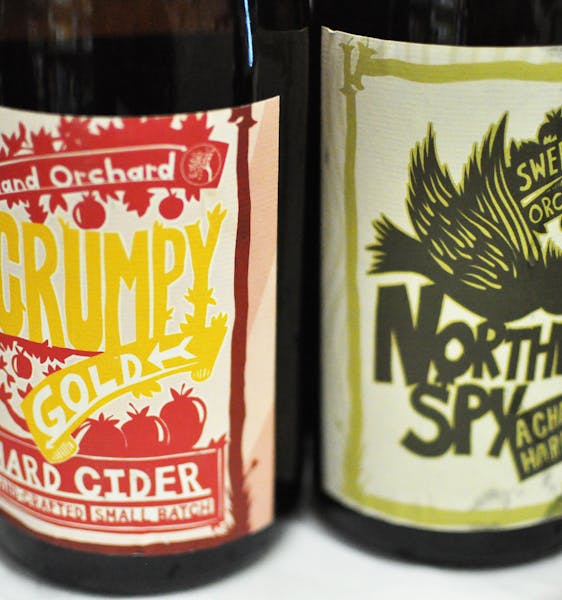Walk into any taproom and you'll likely overhear a couple of beards at the bar talking hops varieties. But could those Citra vs. Centennial convos eventually spiral into Honeycrisp vs. Haralson debates?
Hard cider is having its day in the sunlit orchard, and the microbrew faithful are increasingly embracing the apple. But don't reduce cider to craft beer's sidekick.
"Cider's slightly misunderstood," said Adam Theis, co-founder of Milk and Honey Cider in Cold Spring, Minn. "People don't know where to put it. Is it a beer alternative? Is it related to wine?"
Theis is a brewer by trade and currently helms Indeed Brewing Company's cellar program. While cider has claimed tap lines at beer bars and brewpubs such as Republic and Town Hall, the process is more akin to winemaking than brewing, as they are products of fermented fruit and require the same state license. Still, Theis is hesitant to make too many comparisons. "They're all distinct," he said.
Four Daughters Vineyard and Winery got into the cider game a few years ago, but only began distributing in August. Winemaker Justin Osborne was emboldened to boost production by a group of Irish regulars who visit the Spring Valley, Minn., vineyard a few times a year. They told him that his Honeycrisp cider tasted more like a French or English cider than their American counterparts.
"I don't really know what that means, but they were pretty accomplished cider drinkers so we thought maybe we had something going here," Osborne said.
It's been a big year for Minnesota cider, as a handful of producers have hit the market and others such as Wyndfall Cyder, Keepsake Cidery and Urban Forage Winery and Cider House are in start-up mode. Many of the craft ciders — locally or elsewhere — eschew the candy apple sweetness affiliated with some of the "macro" ciders sold by big producers. The recent crop of cider-makers typically errs on the dry side, preferring cleaner, tarter tipples to apple pie assaults.
"I would never make something I wouldn't drink and I don't like sweet things — sugar bombs," said Mike Perbix of Sweetland Orchard in Webster, Minn.
Minnesota has more apples than grape salads, but sourcing traditional cider-variety apples can be challenging for local producers. Currently, Perbix is only growing enough apples to use for R&D purposes. He buys apples for his Scrumpy line from Pepin Heights Orchard, which also supplies Sociable Cider Werks with juice for their graffs — a malt and cider hybrid. Perbix's uniquely mineral-y, single variety cider Northern Spy is named for an apple he gets from a Michigan grower.
While Osborne found a golden apple with his not-too-sweet-or-sour Loon Juice, made from at least 75 percent Honeycrisp apples, Theis said most grocery store apples don't lend themselves to ciders. Cider apples fall into four classifications: sweets, sharps, bittersharps and bittersweets, based on their levels of tannins and acidity. According to Theis, typical eating apples lack the bitter and sharp characteristics.
"You need all these different parts to make a complete true, traditional cider," he said. "You need to balance all your tannins from your bittersweets, acid from your sharps and then there's apples that are great for aromas and flavor compounds."
While local craft cider is catching on, it's still produced on a relatively small scale. Perbix estimates that he'll have made around 13,000 gallons by year's end, while Theis expects to yield roughly the same amount from this fall's harvest. In brewer speak, that's about 413 barrels — a fraction of what a midsize local brewery would do in a year. But like their beer-bearing counterparts, demand is outpacing supply.
"We get a call once every day it seems like," Perbix said. "I almost wonder how many clients of liquor stores are owners of liquor stores. They see something on the shelves, they're thinking 'Oh, I want that on my shelf.' "
Michael Rietmulder writes about beer, cocktails and nightlife.
In heated western Minn. GOP congressional primary, outsiders challenging incumbent

Minnesota Sports Hall of Fame: A class-by-class list of all members

This retired journalist changed professional wrestling from Mankato

